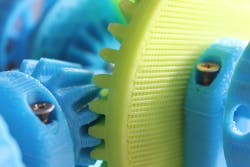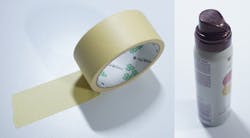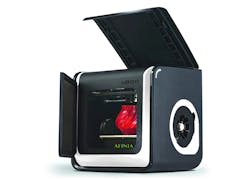You know when a product comes out and we think it’s awesome? Then years later, something comes out to replace it, and we look back at the first thing like, “What a pile.” Well, I’m almost to that point vis-à-vis 3D printers, even though there’s nothing to replace them.
You’re probably groaning by now, but hear me out. Yes, prices for the maker/desktop/DIY category of machines have dropped, the quality of their output has increased, and promotional materials abound with printers creating beautiful and delicate objets d’art.
But like the movie montage where the kids clean up the house before their parents get home, they are glossing over the details. What isn’t shown is the effort, the sweat, the tinkering, the trial and error, and the screaming to the gods themselves to please, please let it work this time.
3D printers may be great, but do they really live up to the hype?
Let’s address the obstacles that keep these devices from truly being the miracle that people have been gushing about for the last 15 years or so.
Warping. 3D printers are extremely sensitive to temperature and temperature changes. Anyone who has any experience at all with them is familiar with this. This goes doubly so for users of unenclosed printers. If you don’t know what I’m talking about, go start a print and then halfway through, swing the closest door wide open. Successful prints shouldn’t be so sensitive.
Porosity. 3D-printed parts are full of tiny holes. Even when you print with a 100% fill, it will leak. This prevents 3D-printed parts from being used in a vast range of applications.
Prints not sticking to the bed. Hairspray and masking tape are far from ideal solutions. Reapplying treatments or specialty surfaces is too much like inking the letters on a manual printing press. There is no equivalent operation necessary before you print out your great aunt’s Bundt cake recipe on your inkjet. I don’t think we should have to do that with our 3D printers, either.
Masking tape and hairspray. Ad-hoc solutions to a problem that shouldn’t exist.
Prints that won’t come off the bed. The reverse of the previous issue is prints that won’t unstick from the bed. We shouldn’t have to push and pry on the print to the extent that it shakes the entire machine and misaligns the bed.
Prints that won’t get out of the way for the next print. I want to set a queue and go do something else. Babysitting a printer is contrary to one of the supposed advantages of a 3D printer. We need some sort of changeover mechanism.
Printers are slow. For models of any substantial size, we’re talking really slow. We get to wait hours or sometimes days to see if the print came out correctly.
3D printing takes a long time. A really long time.
Way too manual. We need 3D printers that are at the level of at least a black-and-white laser printer. You know—you just occasionally feed it paper and toner. Of course, 3D printers aren’t even close to the same level of convenience and reliability. They’re more like MP3 players that get songs loaded onto them via Morse code. Oh, and the Morse code tapper thing costs extra.
Software. A decent selection of software is available, and we’ve all seen the impressive results. The problem is that the software, if it’s user accessible, requires a lot of tuning. Adjusting variables and trying to correlate cause with effect can be maddening. Sometimes it makes you feel like the Sisyphus of 3D printing: forever working toward a goal and never reaching it.
By now many readers are probably bursting with indignation. They can point to a slew of machines that are hands off and can create very high-quality prints. Yes, those machines exist, and they can probably fulfill a lot of the demands I have made. But you know what else they are? Big and super-expensive. Truly high-quality machines are often priced out of the range of many corporate entities, so how are we—the makers and inventors of this world—supposed to get our hands on them?
Two possible exceptions are the Tiertime UP-BOX and Afinia H series of printers. These machines are the most fire-and-forget maker range printers I have seen to date. Yet good as they are, they still are far from what I think needs to be seen in the industry. Also, their software has the hood welded on, leaving very few user-accessible adjustments.
The Afinia H800 comes with preconfigured software that yields fairly consistent and impressive results.
We don’t need nano-assembling 3D printers like the ones that the artificial intelligence Rei Toei jumped out of in William Gibson’s 1999 novel All Tomorrow’s Parties. Nor am I saying that 3D printers are useless. Quite the contrary: I love 3D printers. I own several and have been professionally tasked to use many others. It’s just that my experiences with this technology made me realize that it’s time for the lower-priced desktop machines to reach the next level in sophistication.
I look forward to the day that using these machines isn’t a hobby unto itself. We don’t need another hobby. We need a reliable tool to complement our efforts, not hinder them. All the time you spend mother henning around your 3D printer is time not spent on your projects.
That next level exists. It just needs to be priced right so that it is within reach of the individual. To borrow a phrase from the aforementioned William Gibson, “The future is already here—it's just not very evenly distributed.”
About the Author
Cabe Atwell
Engineer, Machinist, Maker, Writer. A graduate Electrical Engineer actively plying his expertise in the industry and at his company, Gunhead. When not designing/building, he creates a steady torrent of projects and content in the media world. Many of his projects and articles are online at element14 & SolidSmack, industry-focused work at EETimes & EDN, and offbeat articles at Make Magazine. Currently, you can find him hosting webinars and contributing to Penton’s Electronic Design and Machine Design.





